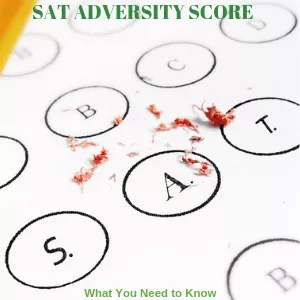What Happened to the College Board’s “Adversity Score”?
By Huntington Learning Center
In May 2019, the College Board announced a plan to provide college admissions officers a dashboard that gives context to an applicant’s neighborhood and high school with that student’s SAT score reports.
Dubbed the “adversity score” by news outlets, the metric—actually called the Environmental Context Dashboard (ECD)—was intended to allow colleges to incorporate a student’s school and environmental context into their admissions process in a data-driven way. The ECD was designed to allow admissions officers the opportunity to view a student’s academic accomplishment in the context of where they live and learn.
Introducing Landscape
In August 2019, the College Board shared its plans to improve upon the idea of the Environmental Context Dashboard by revising and renaming the tool “Landscape.” Landscape will provide information about a student’s neighborhood and high school, helping colleges consider the context in the application review process.
The revised resource is intended to help admissions officers fairly consider every applicant. It does not replace the individual information included in a student’s application (such as GPA, personal essay and high school transcript). It also shows how an applicant’s SAT or ACT score compares to the scores of other students at the same high school.
Here’s a quick summary of the information presented in Landscape:
- High school data, including city/suburban town types and rural town type
- Senior class size
- % of students eligible for free and reduced-price lunch
- Average SAT scores at colleges attended by the three most recent cohorts of college-bound seniors at the applicant’s high school (who took College Board assessments)
- Advanced Placement exams (participation and performance)
- SAT and ACT test score comparison (of the student vs. average scores at their high school)
- Neighborhood and high school indicators, including:
- Predicted probability of students from the neighborhood/high school enrolling in a four-year college
- Household structure (married/coupled families, single-parent families and children living under the poverty line)
- Median family income
- Housing stability (vacancy rates, rental vs. homeownership, mobility/housing turnover)
- Education level
- Crime
The College Board explains that colleges have long considered context about students’ high schools and neighborhoods when making admissions decisions. Landscape is intended to make this process easier and help admissions offers gather consistent information.
Learn more about the new Landscape tool and how colleges will use it at www.collegeboard.org.


